Unveiling the Diverse Landscapes of Nebraska: A Complete Exploration of America's Heartland
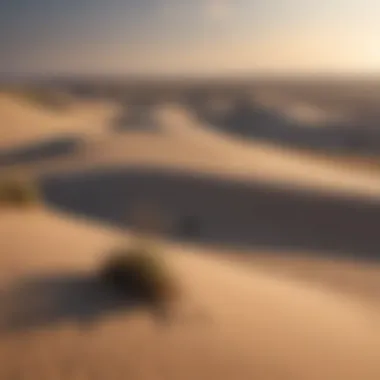
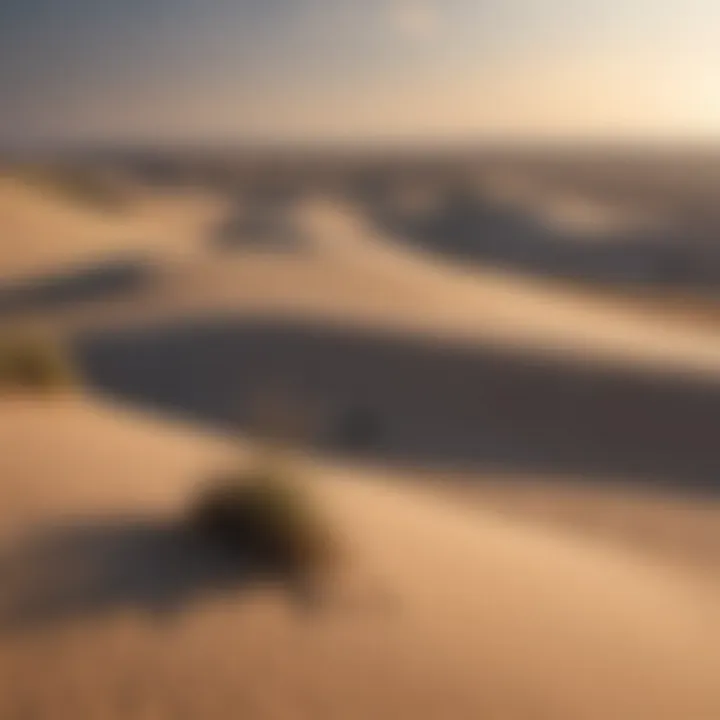
Nature Topic Overview
Nebraska, a state nestled in the heart of the United States, boasts a rich tapestry of landscapes waiting to be explored. From expansive plains to winding rivers, this region presents a diverse array of natural habitats that showcase a unique blend of biodiversity and scenic wonders, providing a captivating experience for nature enthusiasts.
Fun Facts and Trivia
Delving into Nebraska's intricate ecosystems reveals fascinating tidbits that engage young readers and ignite their curiosity. Did you know that the Sandhill crane migration through Nebraska is one of the world's greatest spectacles of nature, attracting thousands of visitors annually? With interactive visuals and fun trivia, children can delve deeper into the wonders of Nebraska's wildlife and landscapes, fostering a love for the natural world.
Wildlife Explorations
Nebraska's wilderness is home to a myriad of captivating species, from the majestic American bison roaming the plains to the vibrant wildflowers adorning the prairies. Children can discover fascinating facts about the animals and plants thriving in Nebraska's habitats, from prairie dogs to burrowing owls, enhancing their understanding of local wildlife. Engaging quizzes and puzzles related to these creatures further enrich the exploration, making learning both educational and enjoyable.
Environmental Awareness
Promoting conservation and sustainability in Nebraska's varied ecosystems is paramount for safeguarding the region's natural heritage. By highlighting the importance of preserving habitats and wildlife, children can grasp the significance of environmental stewardship. Practical tips on how they can contribute to nature conservation empower young minds to take action and foster a sense of responsibility towards the environment.
DIY Nature Activities
Encouraging hands-on experiences, DIY nature activities in Nebraska offer children the opportunity to immerse themselves in creative and educational endeavors. From crafting bird feeders using recycled materials to embarking on guided outdoor explorations, these engaging projects instill a sense of wonder and curiosity about the natural world. Step-by-step guides and suggestions for outdoor activities further encourage kids to apply their newfound knowledge in exciting ways.
Introduction to Nebraska
Nebraska holds a crucial role in the vast expanse of American lands, offering a diverse range of geographical, climatic, and ecological wonders waiting to be explored. From the panoramic plains that stretch as far as the eye can see to the intricate network of rivers snaking through its terrain, Nebraska presents a tapestry of natural beauty that captivates the senses and ignites curiosity.
Geographical Overview
Location and Borders
Venturing into the heart of the Great Plains, Nebraska's strategic location at the crossroads of the United States infuses it with a unique blend of cultural influences and natural significance. Bordered by six states, including Colorado, Iowa, Kansas, and South Dakota, Nebraska's boundary lines extend for miles, defining its territorial identity and contributing to the rich tapestry of the region.
Topography and Terrain Features
Diving into Nebraska's topography unveils a mosaic of terrain features that range from rolling prairies to rugged bluffs, creating a dynamic landscape that shelters a diverse array of flora and fauna. The undulating topography of the Sandhills, the towering peaks of the Wildcat Hills, and the sweeping valleys of the Missouri River all add depth and character to Nebraska's natural makeup, offering panoramic vistas and unique ecosystems waiting to be explored.
Climate and Weather Patterns
Seasonal Variations
Nebraska's climate undergoes distinctive seasonal shifts, with winter bringing icy temperatures and snowfall, while summer ushers in warm days and thunderstorms. The dramatic interplay of seasons influences the state's ecosystems, shaping the behavior of wildlife and the growth patterns of native plants. Exploring Nebraska's seasonal variations provides a deeper understanding of the cycle of life in this unique region.


Impact on Ecosystems
The dynamic weather patterns in Nebraska exert a profound influence on its ecosystems, driving adaptations among native species and sculpting the fragile balance of its natural habitats. From the rejuvenating rains of spring to the sweltering heat of summer, each weather element plays a critical role in sustaining the intricate web of life in Nebraska. Understanding the impact of climate and weather on ecosystems is key to appreciating the resilience and fragility of this pristine wilderness.
Natural Landscapes
In this article, the section on Natural Landscapes serves as a crucial lens through which we explore the captivating landscapes of Nebraska. Natural landscapes are not merely physical environments; they represent a harmonious blend of various elements that have evolved over time. Understanding these landscapes allows us to appreciate the intricate interconnectedness of Nebraska's ecosystem. By delving into the plains, prairies, forests, woodlands, rivers, and lakes, we unravel the rich tapestry of biodiversity that defines Nebraska's natural beauty.
Plains and Prairies
Flora and Fauna
The plains and prairies of Nebraska are adorned with a diverse array of flora and fauna, showcasing the resilience and adaptability of species in this environment. From wide-stretching grasslands to colorful wildflowers, the flora of the plains and prairies adds vibrancy to the landscape. Native grass species like buffalo grass and big bluestem not only provide sustenance for wildlife but also stabilize the soil, preventing erosion. Fauna such as bison, pronghorn, and prairie dogs thrive in this habitat, forming a unique ecosystem that has adapted to the harsh, yet rewarding, conditions of the plains and prairies. The flora and fauna of this region are integral to the overall ecological balance, making them a focal point in our exploration of Nebraska's natural landscapes.
Conservation Efforts
Conservation efforts in the plains and prairies play a vital role in preserving the delicate balance of this ecosystem. Conservationists work tirelessly to protect native grasslands, restore habitats, and ensure the survival of endangered plant and animal species. By employing sustainable land management practices and raising awareness about the importance of preserving these habitats, conservation efforts contribute significantly to maintaining the biodiversity of Nebraska's natural landscapes. The conservation of plains and prairies is not just a local endeavor but a global responsibility, recognizing the intrinsic value of these ecosystems in sustaining life on our planet.
Forests and Woodlands
Tree Species
The forests and woodlands of Nebraska are a sanctuary for a diverse range of tree species, each playing a unique role in the ecosystem. From towering cottonwood trees along the riverbanks to the intricate canopy of oak and hickory in upland forests, tree species contribute to the beauty and functionality of Nebraska's woodlands. These trees provide habitat for wildlife, regulate temperature, and improve air quality through carbon sequestration. Understanding the characteristics of different tree species helps us appreciate the intricate connections that exist within forest ecosystems and underscores the importance of conservation efforts in preserving these natural wonders.
Wildlife Habitats
The woodlands of Nebraska provide vital habitats for a variety of wildlife species, from small mammals to migratory birds. By offering food, shelter, and nesting sites, these woodlands support a rich diversity of wildlife populations. The undergrowth of shrubs and bushes creates a complex network of habitats for insects and small animals, forming the basis of the woodland food chain. Protecting wildlife habitats in forests and woodlands is essential for maintaining biodiversity and ensuring the long-term sustainability of these ecosystems. Conservation of wildlife habitats not only benefits native species but also enhances the overall health and resilience of Nebraska's natural landscapes.
Rivers and Lakes
Water Quality
The quality of water in Nebraska's rivers and lakes is a critical determinant of ecosystem health and human well-being. Clean water supports aquatic life, agriculture, and recreational activities, making it essential for the sustainability of local communities. Monitoring water quality parameters such as p H, dissolved oxygen, and nutrient levels helps assess the overall health of freshwater ecosystems. Addressing threats such as pollution, habitat destruction, and invasive species is paramount in maintaining high water quality standards in Nebraska's rivers and lakes. By prioritizing water quality management, we can safeguard the integrity of aquatic ecosystems and ensure access to safe and sustainable water resources.
Aquatic Species
The diverse array of aquatic species in Nebraska's rivers and lakes contributes to the richness and complexity of freshwater ecosystems. From fish species like bass and catfish to amphibians like frogs and salamanders, aquatic biodiversity plays a crucial role in maintaining ecosystem balance. Protecting aquatic species involves preserving habitat diversity, controlling pollution, and regulating fishing practices to prevent overexploitation. Understanding the unique features and behaviors of aquatic species enhances our appreciation for these underwater marvels and emphasizes the need for conservation efforts to safeguard their populations. By valuing aquatic species, we acknowledge their intrinsic worth in the broader context of Nebraska's ecological diversity.
Ecological Diversity:
Exploring the intricate Ecological Diversity in Nebraska reveals the profound importance of preserving nature's intricate balance. The diverse array of ecosystems in the region contributes significantly to its overall resilience and sustainability. By examining the interconnections between different species and habitats, one can appreciate the delicate web of life that exists in Nebraska. The Ecological Diversity of the region serves as a testament to the wonders of nature and underscores the need for conservation efforts to protect these invaluable resources.
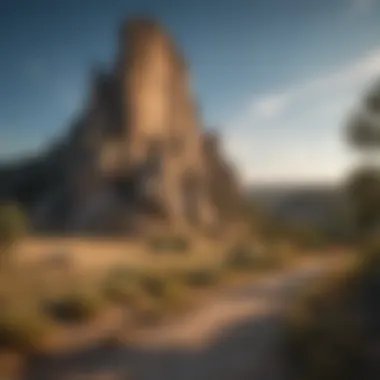
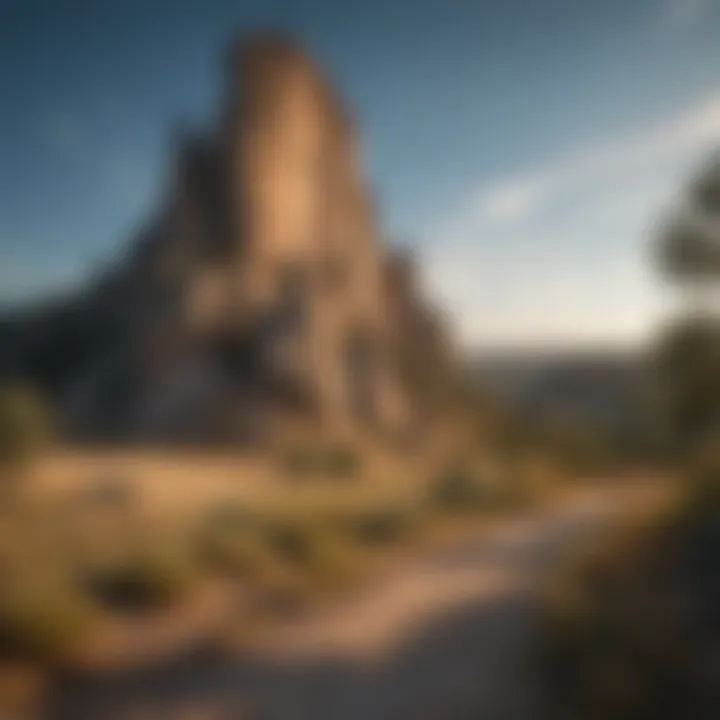
Native Species:
Endemic Plants:
The Endemic Plants of Nebraska play a crucial role in maintaining the ecological equilibrium of the region. These plants, unique to Nebraska, showcase remarkable adaptability to the local conditions, enriching the landscape with their distinct characteristics. The Endemic Plants not only contribute to the overall biodiversity but also serve as indicators of the region's environmental health. Their resilience to the local climate and soil conditions makes them a valuable asset in promoting a sustainable ecosystem. Despite their significance, Endemic Plants face challenges due to habitat loss and climate change, emphasizing the importance of conservation measures to safeguard their future.
Indigenous Wildlife:
The Indigenous Wildlife of Nebraska represents a vital component of the region's biodiversity. These native species have adapted over generations to thrive in the varying habitats of Nebraska, forming integral parts of the local food chains and ecosystems. The presence of Indigenous Wildlife enriches the natural landscape and offers valuable insights into the region's ecological heritage. However, factors such as habitat degradation and human encroachment pose significant threats to these species, warranting conservation actions to ensure their continued existence in Nebraska's diverse ecosystems.
Migration Patterns:
Birds and Butterflies:
The migration patterns of Birds and Butterflies in Nebraska exhibit the marvels of nature's seasonal movements. These aerial travelers navigate vast distances, following unique routes that showcase their remarkable endurance and instincts. The presence of diverse bird and butterfly species in Nebraska not only adds to the region's ecological diversity but also offers opportunities for wildlife enthusiasts to witness these captivating journeys. Understanding the migration patterns of Birds and Butterflies provides key insights into the interconnectedness of global ecosystems and highlights the need for habitat protection along their migration routes.
Seasonal Movements:
The Seasonal Movements of wildlife in Nebraska signify a dynamic cycle of life and adaptation. As animal populations shift in response to changing environmental conditions, their movements reflect the intricate balance of nature's rhythms. Studying the Seasonal Movements of species in Nebraska allows researchers to track patterns, assess population health, and implement conservation strategies effectively. By recognizing the significance of these movements, conservation efforts can be tailored to support the natural migratory behaviors of wildlife and ensure the integrity of Nebraska's diverse ecosystems.
Conservation Initiatives
In the realm of exploring the natural landscapes of Nebraska, one cannot overlook the crucial role of conservation initiatives. These endeavors are pivotal in preserving the ecological balance and biodiversity of the region, ensuring a sustainable future for generations to come. By focusing on conservation initiatives, this article sheds light on the profound impact of human activities on landscapes and the pressing need to adopt responsible practices. The discussion on conservation initiatives delves deep into the principles of environmental stewardship, emphasizing the importance of protecting native species and habitats from degradation and destruction. Through a comprehensive guide to conservation initiatives, readers gain a nuanced understanding of the challenges and opportunities in safeguarding Nebraska's natural treasures.
Protected Areas
National Parks
Exploring the distinctive landscapes of Nebraska unveils the significance of National Parks in preserving unique ecosystems and promoting environmental awareness. National Parks serve as bastions of biodiversity, safeguarding rare species and habitats from industrial encroachment. Notable for their untouched beauty and untamed wilderness, National Parks offer visitors a glimpse into the natural wonders of Nebraska. The allure of these protected areas lies in their ability to provide sanctuary for flora and fauna while offering educational opportunities for travelers seeking to connect with nature. Despite challenges such as resource management and visitor impact, National Parks stand as beacons of conservation in the landscape of Nebraska, enriching the narrative of exploration and discovery.
Nature Reserves
Nature Reserves constitute integral components of Nebraska's conservation initiatives, playing a vital role in preserving critical habitats and promoting species protection. These reserves are dedicated to safeguarding specific ecosystems, allowing for natural processes to unfold without human interference. Characterized by their focus on conservation and research, Nature Reserves provide a sanctuary for vulnerable species and serve as living laboratories for ecological studies. Their resilience to external threats and commitment to biological diversity make Nature Reserves indispensable in the tapestry of Nebraska's natural landscapes. While facing challenges such as funding constraints and climate change impacts, these reserves stand resilient in their mission to maintain ecological balance and sustainability.
Sustainable Practices
Sustainable practices form the cornerstone of conservation efforts in Nebraska, embodying a commitment to balancing environmental protection with human development. Green initiatives take center stage in promoting eco-friendly lifestyles and reducing carbon footprints across communities. By integrating sustainable practices into daily routines, individuals and organizations contribute to mitigating the adverse effects of climate change and resource depletion. The emphasis on green initiatives underscores the importance of fostering a culture of environmental responsibility and stewardship among Nebraska's populace. Community engagement plays a pivotal role in championing sustainable practices, encouraging collective action and fostering a sense of shared responsibility towards the preservation of natural resources. Through collaborative efforts and awareness campaigns, Nebraska is poised to lead the way in sustainable development and conservation practices.
Exploration and Outdoor Activities
Exploration and Outdoor Activities play a vital role in this article, offering readers a chance to immerse themselves in the diverse landscapes and natural beauty of Nebraska. By engaging in outdoor activities, visitors can truly connect with the environment, fostering a deeper appreciation for the region's ecological wonders. Whether it's hiking, wildlife watching, or nature photography, these activities provide a unique opportunity to explore the rich biodiversity and scenic treasures that Nebraska has to offer.
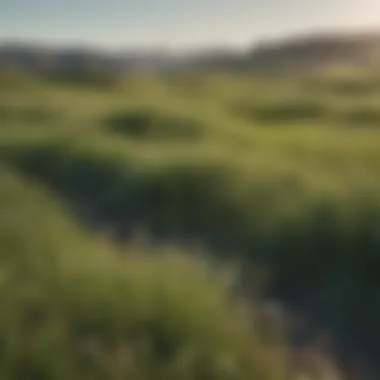

Hiking Trails
Hiking Trails in Nebraska offer a remarkable experience for outdoor enthusiasts, with a plethora of options to suit every preference and skill level. From leisurely strolls to challenging treks, hikers can choose trails that meander through diverse landscapes, showcasing the natural beauty of the region. The Scenic Routes aspect of Hiking Trails stands out as it allows hikers to immerse themselves in picturesque settings, offering stunning views and a deep sense of tranquility. These routes are popular among both locals and tourists for their ability to provide a rejuvenating outdoor experience in the heart of nature.
Trail Difficulty Levels
Trail Difficulty Levels in Nebraska cater to individuals of all abilities, ensuring that everyone can partake in the joy of hiking. Whether you're a novice hiker or an experienced trekker, there are trails with varying difficulty levels to challenge and inspire you. The unique feature of Trail Difficulty Levels lies in their ability to accommodate diverse skill sets, making hiking accessible to a wide range of enthusiasts. While some may find the rugged terrains a thrilling adventure, others may prefer gentle paths that offer a more relaxed experience. Each difficulty level presents its own set of advantages, providing hikers with opportunities to push their boundaries and explore Nebraska's landscapes in a meaningful way.
Wildlife Watching
Wildlife Watching in Nebraska is a captivating activity that allows individuals to observe the region's fauna in their natural habitat. Binocular Essentials play a crucial role in enhancing the wildlife viewing experience, allowing visitors to spot intricate details and behaviors from a distance. The key characteristic of Binocular Essentials lies in their ability to bring wildlife up close without causing disturbance, offering a safe and engaging way to appreciate Nebraska's diverse animal species.
Best Viewing Spots
Best Viewing Spots in Nebraska provide prime locations for observing wildlife in their element, ensuring that visitors can witness captivating moments in nature. These spots are carefully selected for their abundance of animal activity and unique ecosystems, creating ideal settings for wildlife enthusiasts. The unique feature of Best Viewing Spots is their ability to offer a front-row seat to wildlife interactions, allowing individuals to connect with nature on a profound level. While each spot may present its own set of advantages, all aim to provide an immersive and memorable wildlife watching experience.
Nature Photography
Nature Photography in Nebraska presents endless opportunities to capture the region's beauty through a lens, preserving fleeting moments in time. Photography Tips are essential for enthusiasts looking to enhance their skills and create visually striking images that reflect Nebraska's natural wonders. The key characteristic of Photography Tips is their ability to guide photographers in composition, lighting, and subject selection, allowing them to produce captivating photographs that evoke the essence of the landscape.
Capture Moments
Capture Moments in nature photography represent intimate encounters with the environment, enabling photographers to freeze time and encapsulate the beauty of Nebraska's landscapes. The unique feature of Capture Moments is their capacity to elicit emotions and memories through visual storytelling, offering viewers a window into the photographer's perspective. While each captured moment may hold personal significance, collectively, they contribute to a narrative of Nebraska's ecological diversity and scenic splendor, creating a visual legacy for future generations to appreciate.
Cultural Heritage and Landmarks
Exploring the cultural heritage and landmarks of Nebraska plays a pivotal role in unraveling the rich tapestry of the region's history and significance. From historic sites to traditional practices, each element serves as a reminder of the state's past and its cultural evolution. By delving into these landmarks, visitors can witness the fusion of time-honored traditions with modern influences, offering a unique perspective on Nebraska's identity and heritage.
Historic Sites
Landmarks
In Nebraska, landmarks stand as monumental testaments to the state's past glory and architectural prowess. The striking feature of landmarks lies in their ability to encapsulate stories of bygone eras, providing a visual narrative of historical milestones. These landmarks serve as popular choices for visitors seeking to immerse themselves in the state's heritage, offering a glimpse into the essence of Nebraska's cultural landscape. Their unique architectural styles and historical significance make them instrumental in shaping the overall narrative of this article, enriching the exploration of Nebraska's cultural heritage.
Preservation Efforts
Preservation efforts in Nebraska are crucial in maintaining the integrity and authenticity of the state's cultural treasures. By focusing on preservation, stakeholders ensure that future generations can enjoy and appreciate these landmarks for years to come. The key characteristic of preservation efforts lies in their dedication to safeguarding historical sites from deterioration and modern encroachments, thus retaining the essence of Nebraska's heritage. While there may be challenges and limitations in preservation efforts, their advantages far surpass any disadvantages, contributing significantly to the article's mission of preserving and promoting the state's cultural heritage.
Native American Heritage
Tribal Communities
Within Nebraska, Tribal Communities stand as living embodiments of the state's indigenous roots and ancestral connections. These communities play a fundamental role in preserving traditional values and cultural practices, enriching the tapestry of Nebraska's heritage. By highlighting their key characteristics and contributions, readers can gain a deeper appreciation for the diversity and resilience of Nebraska's Native American heritage. The unique feature of Tribal Communities lies in their ability to impart invaluable insights into the historical and cultural essence of the state, making them indispensable assets in elucidating Nebraska's heritage within the context of this article.
Traditional Practices
Traditional practices within Native American communities in Nebraska encompass a myriad of customs, rituals, and beliefs that have withstood the test of time. These practices not only showcase the spiritual and cultural depth of the communities but also underscore the importance of preserving ancestral legacies. The key characteristic of traditional practices lies in their ability to bridge the past with the present, offering a continuum of traditions that define Nebraska's cultural ethos. While challenges may exist in maintaining these practices, their advantages in preserving cultural authenticity and heritage significantly elevate the narrative presented in this article, providing readers with a holistic understanding of Nebraska's Native American legacy.







